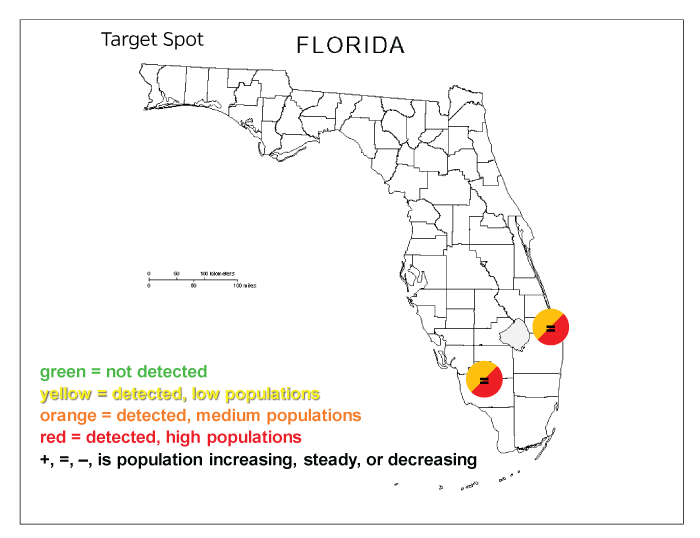One tomato disease remains prevalent in South Florida, according to the South Florida Pest and Disease Hotline.

Target spot (Corynespora cassiicola) is being observed at moderate to high levels in tomato fields across the region. It is also extremely high in older plantings in fields on the east coast.
Target spot symptoms can be confused easily with bacterial spot and early blight diseases. Scouting is important to detect early symptoms of the disease. There is a bull’s eye appearance that is often observed in lesions caused by the disease. A laboratory diagnosis is needed since concentric rings are not always visible and not all lesions with concentric rings are target spot.
Lesions are more distinct on tomato fruit. The lesions enlarge and coalesce as the fruit matures, resulting in large, pitted areas. More advanced symptoms include large sunken lesions, often with visible dark gray to black fungal growth in the center.
Optimum conditions for the disease’s development include temperatures from 68 degrees Fahrenheit (F) to 82 F with extended periods of moisture-free conditions.
If farmers want to avoid target spot in the future, they should rotate fields to avoid carryover on crop residue and avoid rotations among solanaceous crops. It is also important to start with clean, healthy transplants and maintain proper fertility.









